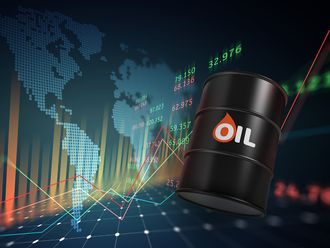By the time this column reaches the readers, the Etihad Grand Prix at the Yas Marina circuit would have been over and the result of Formula One drivers' championship this year would have been decided.
But what does an oil commentator have to do with this? Well, I am an avid fan of Formula One and there is hardly any major oil company that is not one way or another involved in the sport. Oil companies do not use the races for advertisement only but as a mobile testing laboratory for fuels and lubricants. Automobile companies also benefit from results of engine performance where applications are possible to benefit the design of ordinary cars.
To some people, the sport is boring and only involves cars going aimlessly around. But once you see one race and know a little bit about the rules the picture changes dramatically. At the same time some consider the sport a waste of money especially with costly circuits and installations. But many circuits do make a profit by finding activities around the year and not just for the race weekend. Of course the general economy does benefit a great deal as advertising companies, hotels, airlines and tourism thrive because of the event. Formula One cars are powered by petrol and the fuel should be "predominantly composed of compounds normally found in commercial fuels", which is tested and approved before the race.
Looking at typical specifications of the fuel, it is not far from normal petrol sold in public stations. There are however, small variations in some parameters and the fuel supplier can play with the product within these limits to improve performance from one race to another.
Heavy fuel
But this was not always the case. Many years ago Formula One cars used a heavy type of fuel with a high content of aromatics to ensure higher octane suitable for the high compression ratio of the powerful engine and because it was heavy the fuel tank size needed was smaller. But the fuel was not friendly to the engine and as environmental awareness hit the organisers they switched for a brief number of years to methanol, a light chemical compound which burns better than petrol but is poisonous and needs special handling and definitely a refuelling stop during the race. Therefore, the organisers rightly decided to use fuels that are similar or very close to commercial fuels to give the same environmental impact as ordinary cars and benefit the oil companies supplying the fuels, sometimes at no cost.
The same goes for engine lubricating oils where advantages accrue to oil and additive companies in terms of research and testing that can be beneficial for the millions of ordinary cars.
In a typical race, a car usually consumes 75 litres of fuel for every 100 kilometres or about 225 litres in a race and the car is probably 20 per cent more efficient than normal cars. Therefore, for all the Formula One events the total fuel for all participating cars in races, practice and testing is close to 200 cubic metres only and the environmental impact of such a quantity cannot be much.
However, due to the visibility of the sport and its worldwide following it has come under pressure to be a role model and become "green". For this purpose the International Automobile Federation (FIA) and the Formula One Teams Association (FOTA) introduced many initiatives a few years ago. The most important is Kinetic Energy Recovery System (KERS), which recovers braking energy and stores it for later use.
Environment
This is not yet fully in use but some suggest that it will even be employed in ordinary cars in a decade or so due to increasing fuel cost and environmental pressures. Promise of a cleaner engine for the 2013 season is already in place with a target to cut emissions by 15 per cent. Even bio-fuels may be used in the future; something that is already happening in the USA with respect to Indy Car Racing.
Coupled with all this, Formula 1 is faced with increasing costs and for this reason it has reduced engine size to V8 design with less power than the previous V10 engines. It has also prohibited the use of exotic materials in engine construction and limited its revolutions per minute. Each racing car is allowed the use of eight engines only during the whole season.
As long as all the development research in Formula One serves the wider public with its positive outcomes, racing will not only be exciting to the fans but useful to all of us.
The writer is the former head of Energy Studies Department in OPEC Secretariat in Vienna.












